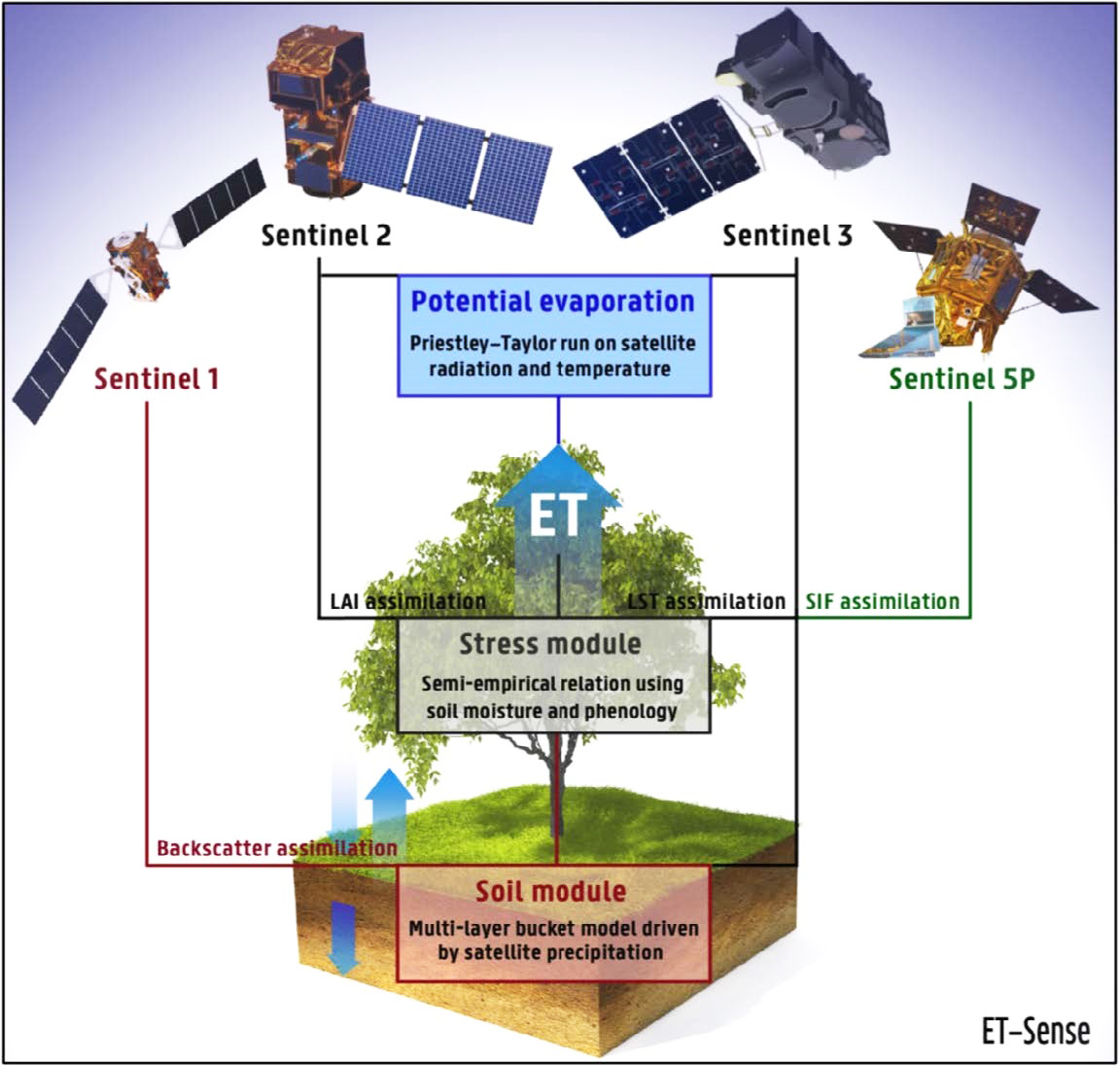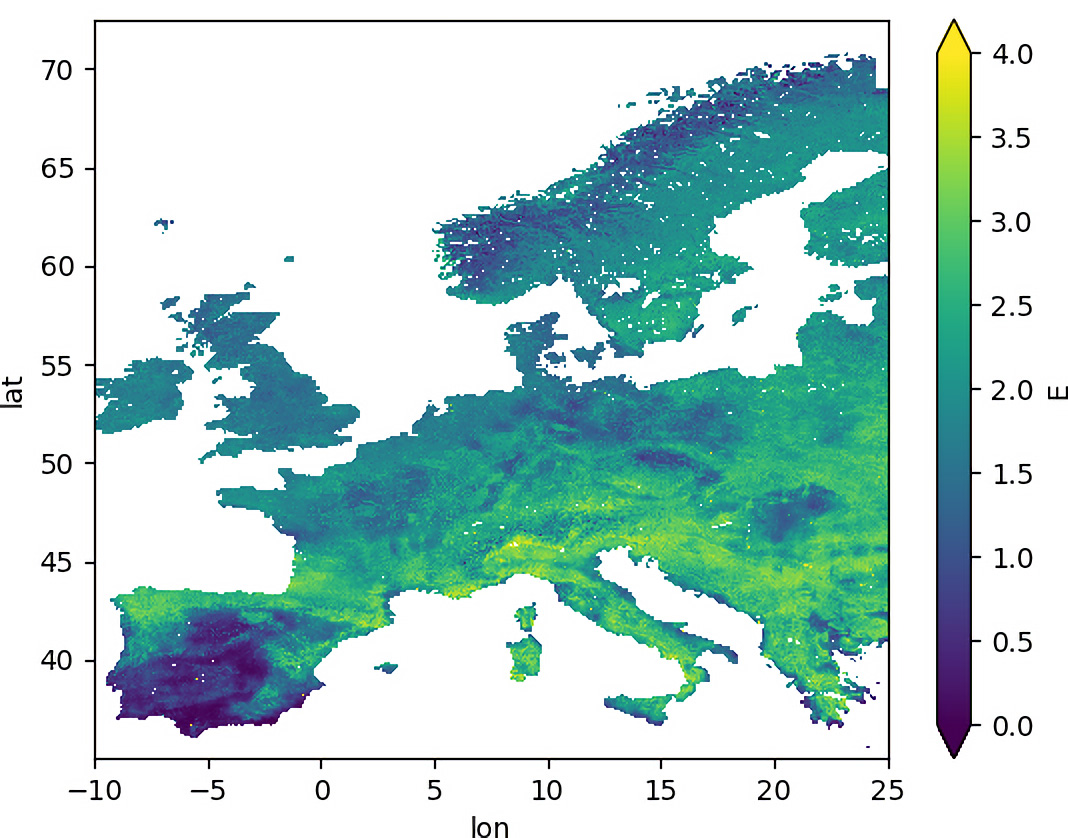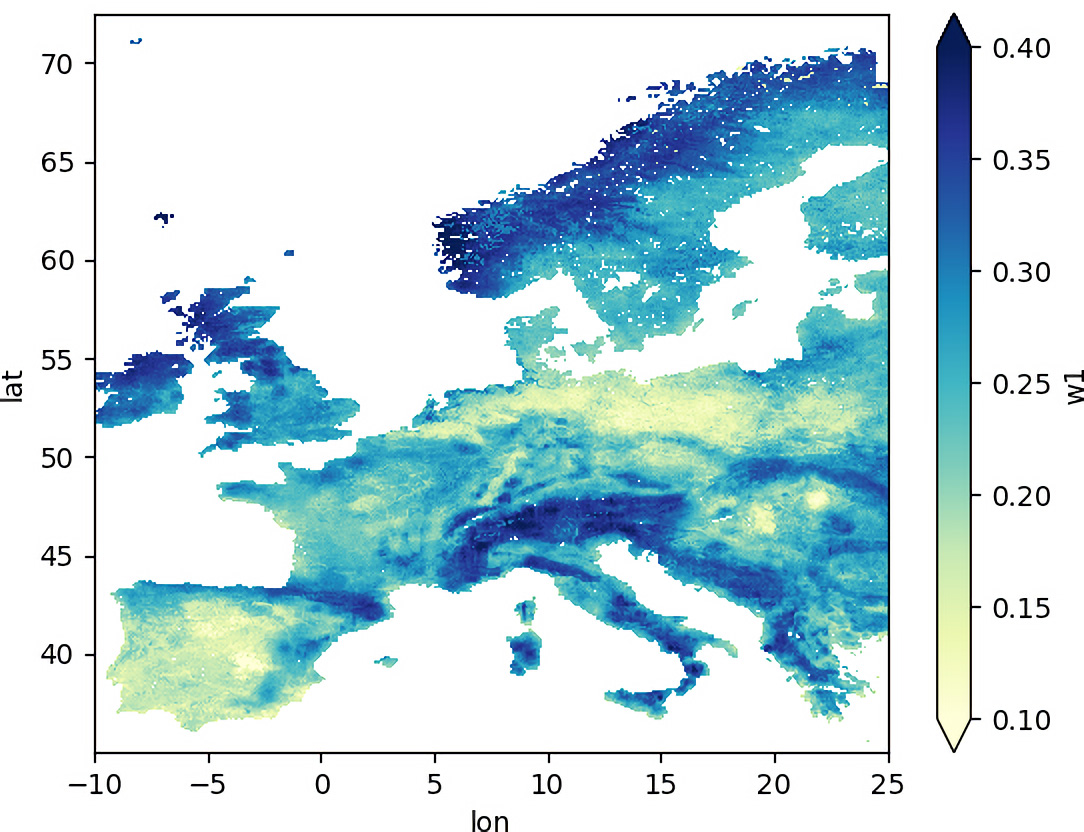Published on 24 June 2022
Terrestrial evaporation, a crucial link
Terrestrial evaporation is an essential component of the climate system that links water and energy cycles. By doing so, it regulates the interaction between land and atmosphere through multiple feedbacks on climate, and thus shaping local precipitation, cloudiness and temperature. Bearing in mind this crucial importance, the continental-to-global magnitude and variability of E has been given a lot of attention over the past years.
Equations (such as those by Priestley and Taylor), that are based on local experiments have recently been used to develop global evaporation datasets using remotely sensed input data, e.g., radiation and temperature. Several ESA, NASA or EU initiatives have contributed to this development (NEWS, iLEAPS, WATCH project, GEWEX, WACMOS, WACMOS-ET and SMOS+ET1/2).

Concept of ET–Sense using observations from the Sentinel constellation to allow for an increase in spatial resolution of the GLEAM evaporation model.
Challenges to tackle...
These global datasets cannot be easily downscaled to the resolution required for local or regional-scale studies, despite the equations being suitable, since the input data they use are often very coarse.
Given these constraints, the following research questions arise: Can current global remote sensing-based evaporation models be used to derive high-resolution retrievals at continental scales? Can those retrievals inform on the variability of root-depth soil moisture and evaporation to local stakeholders? Could these datasets be operationally produced?
...with the help of Sentinel data
The STEREO III ET-SENSE project team, composed of researchers from the Hydro-Climate Extremes Lab (H-CEL) of Ghent University and the King Abdullah University of Science and Technology (Saudi Arabia), tried to address these questions.
To do this, they took advantage of high-resolution observations related to a number of geophysical variables provided through the Sentinel satellites and incorporated these into a state-of-the art global evaporation and soil moisture model, namely GLEAM (Global Land Evaporation Amsterdam Model).
By adapting the modelling framework to make use of Sentinel observations in a novel and innovative way, they produced evaporation and root-zone soil moisture data for the entirety of Europe at 1 km spatial resolution and at daily time scales. This is the first pan-European dataset of this nature which allows recent developments in the fields of Hydrology and Climatology to be adapted to the real agricultural and water management needs.

1 km mean evaporation for August 2018
More specifically, the team explored
- the assimilation of Sentinel-1 backscatter observations to improve soil moisture simulations across European validation sites;
- the use of leaf area index as a vegetation descriptor (still based on the Sentinel-3 precursor mission Proba‑V);
- Sentinel-3 land surface temperature in combination with observations from geostationary satellites for a much improved radiation and temperature forcing.
In addition, the datasets representing the surface heterogeneity for the global application of GLEAM were substituted for datasets best suited for the 1 km European simulations.
The developed methodologies are already being used in follow-on projects and the datasets developed during ET–SENSE will be made publicly available in due time.

1 km mean soil moisture for August 2018
Better analysis of heat waves and droughts
The ET-SENSE project has opened up new insights in evaporation and soil moisture research by facilitating the integration of observations from Sentinel satellites into a simplified land surface model, allowing for the simultaneous updating of several state variables.
These advances in high-resolution evaporation and soil moisture monitoring in Europe will benefit analysis of heat-waves, droughts and soil moisture anomalies, as well as improving overall knowledge of the hydrological cycle.
More information
STEREO III ET-SENSE project: High-resolution terrestrial evaporation from Sentinels